Scientists from the U.S. Department of Energy’s (DOE) Brookhaven National Laboratory have shown that a type of qubit whose architecture is more amenable to mass production can perform comparably to qubits currently dominating the field.
Tag: Brookhaven Lab
Studying Loss to Make Quantum Computing Gains
Scientists from Yale University and the U.S. Department of Energy’s (DOE) Brookhaven National Laboratory have developed a systematic approach to understanding how energy is lost from the materials that make up qubits. Energy loss inhibits the performance of these quantum computer building blocks, so determining its sources — and adjusting the materials as necessary — can help bring researchers closer to designing quantum computers that could revolutionize several scientific fields.
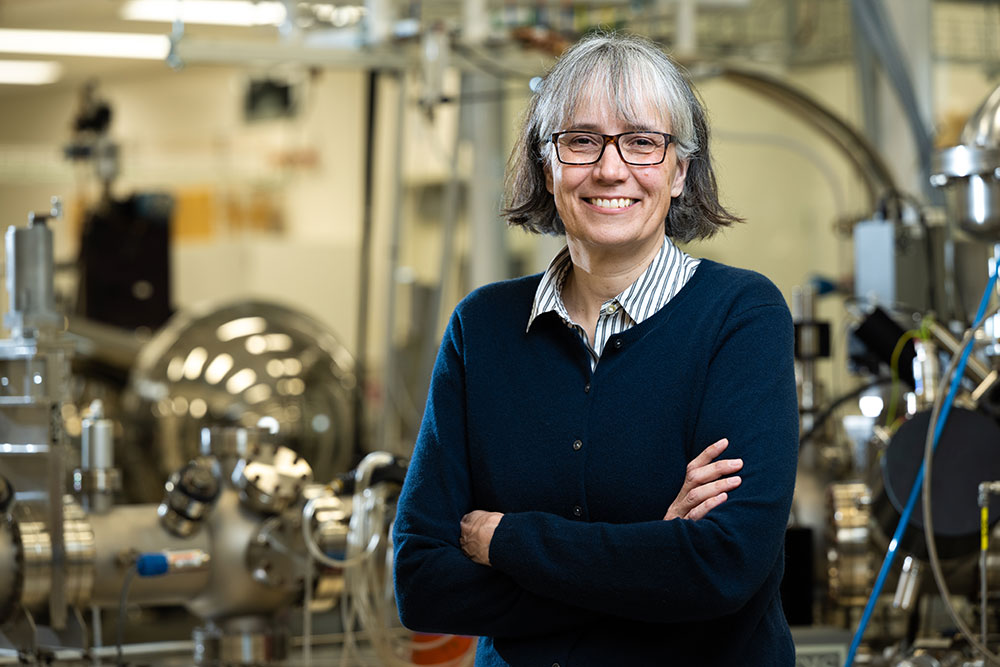
Elke Arenholz Named Director of the National Synchrotron Light Source II at Brookhaven Lab
UPTON, N.Y. — Elke Arenholz, a renowned scientist known for her expertise in magnetic materials and X-ray spectroscopy, scattering, imaging, and instrument development, has been named director of the National Synchrotron Light Source II (NSLS-II), a U.S. Department of Energy (DOE) Office of Science user facility at DOE’s Brookhaven National Laboratory, effective August 2024.
João Barata Awarded CERN Fellowship
João Barata, a physicist in the Nuclear Theory Group at the U.S. Department of Energy’s (DOE) Brookhaven National Laboratory, has received a fellowship at CERN, the European Organization for Nuclear Research. In October 2024, Barata will begin the three-year-long appointment in CERN’s Department of Theoretical Physics.
First Calibration Training at CAMS
Scientists from the Center for Aerosol Measurement Science (CAMS) at the U.S. Department of Energy’s (DOE) Brookhaven National Laboratory hosted the center’s first calibration activities on Nov. 30 and Dec. 1.
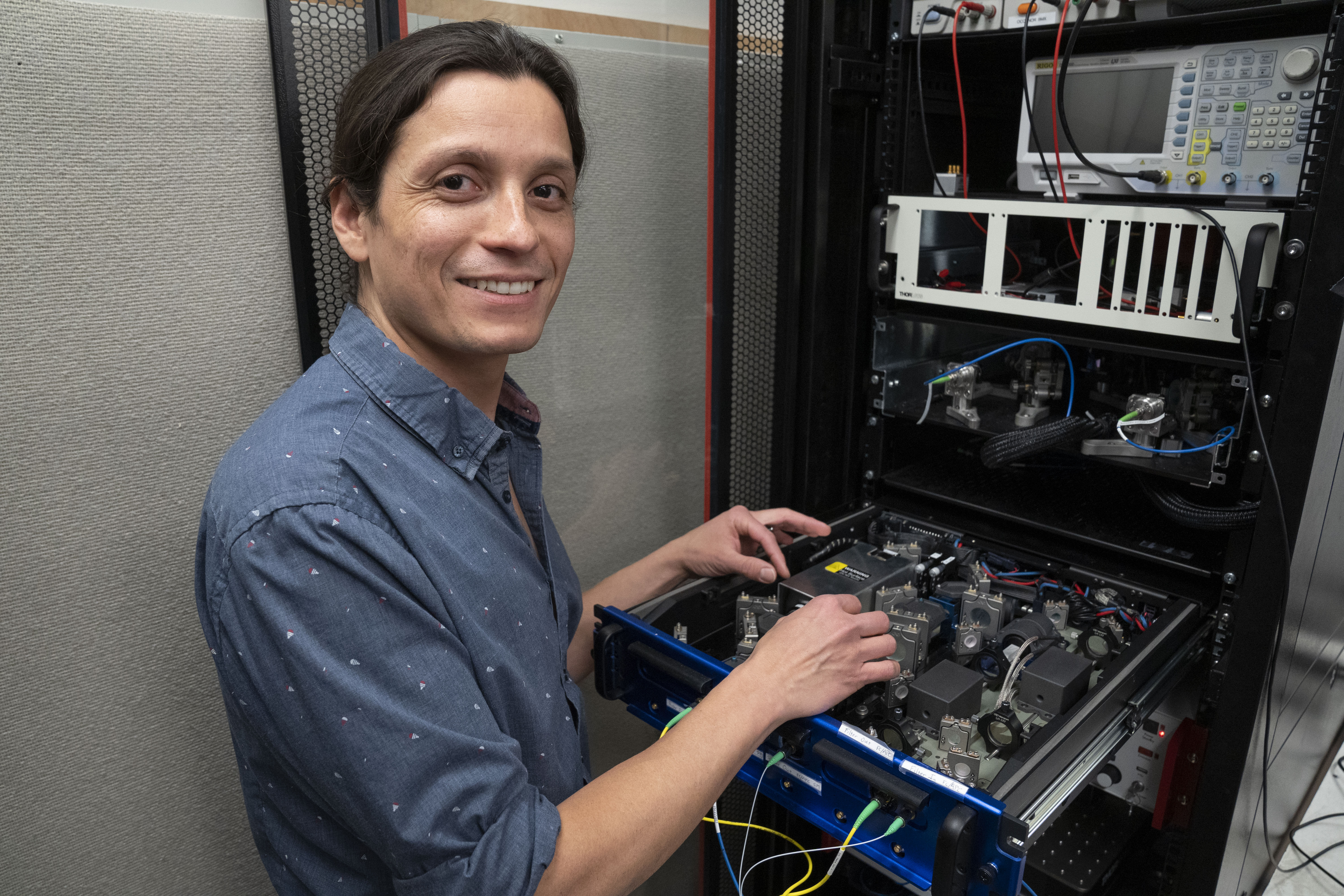
Martinez-Rincon Elected Vice Chair of QED-C Committee
Julian Martinez-Rincon, a quantum scientist at the U.S. Department of Energy’s (DOE) Brookhaven National Laboratory, has been elected vice chair of the Standards & Performance Metrics Technical Advisory Committee (TAC) of the Quantum Economic Development Consortium (QED-C).
Chemists Unravel Reaction Mechanism for Clean Energy Catalyst
Chemists at the University of Kansas and Brookhaven National Laboratory have unraveled the entire reaction mechanism for a key class of water-splitting catalysts. Their work could help pure hydrogen be produced from renewable energy sources such as solar power.
Brookhaven Lab Physicist Mary Bishai Elected DUNE Co-Spokesperson
Mary Bishai, a distinguished scientist at the U.S. Department of Energy’s (DOE) Brookhaven National Laboratory, has been elected co-spokesperson of the Deep Underground Neutrino Experiment (DUNE). In her new role, Bishai will lead DUNE’s 1,400-member international collaboration—the largest neutrino collaboration in the world.
AI Discovers New Nanostructures
UPTON, NY—Scientists at the U.S. Department of Energy’s (DOE) Brookhaven National Laboratory have successfully demonstrated that autonomous methods can discover new materials. The artificial intelligence (AI)-driven technique led to the discovery of three new nanostructures, including a first-of-its-kind nanoscale “ladder.
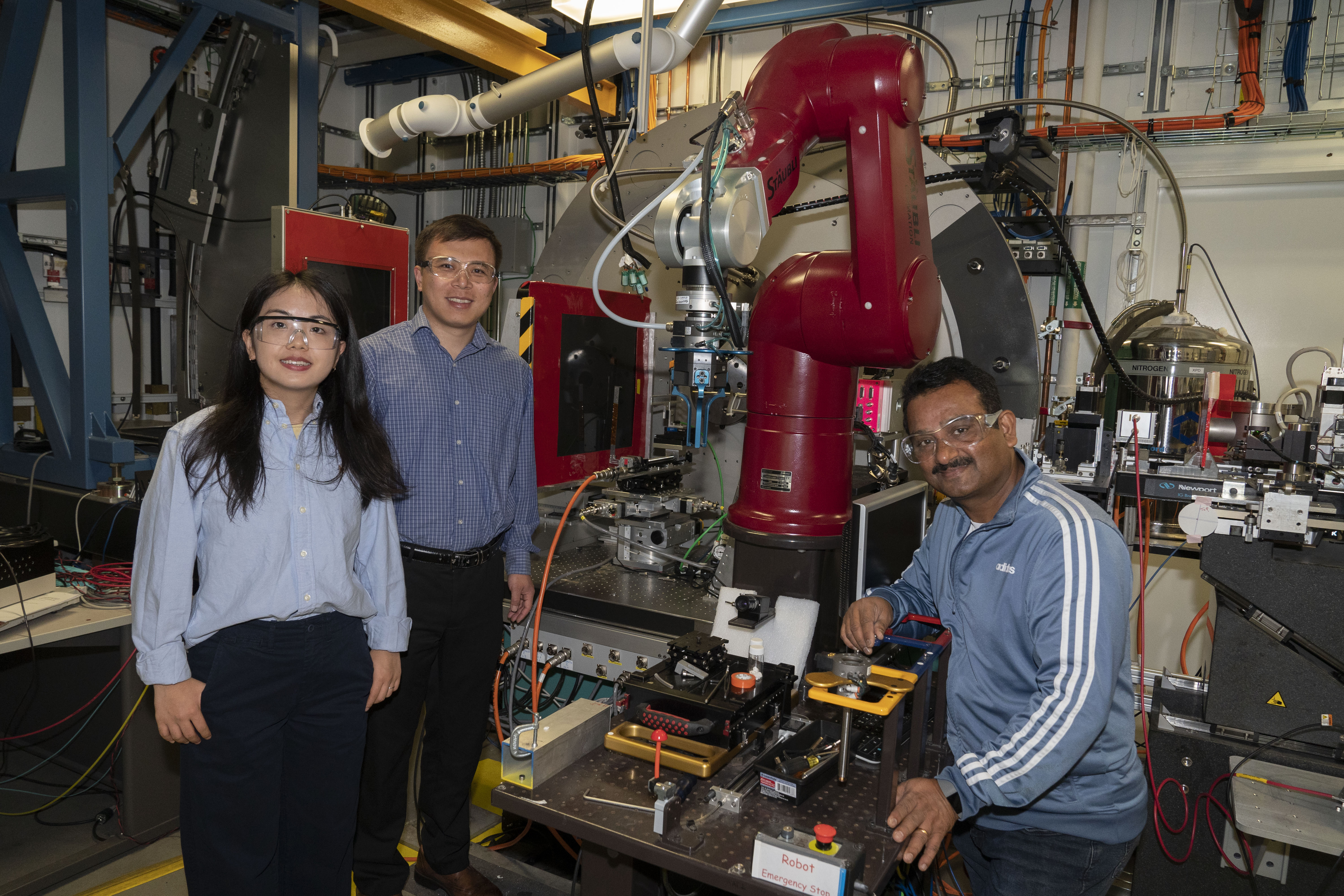
X-rays Reveal Elusive Chemistry for Better EV Batteries
A team of scientists led by chemists at the U.S. Department of Energy’s Brookhaven National Laboratory and Pacific Northwest National Laboratory has unraveled the complex chemical mechanisms of a battery component that is crucial for boosting energy density: the interphase.
Meet Kayla Hernandez: Electrical Engineer Helps Send Particle Beams Into RHIC
Meet Kayla Hernandez: Electrical Engineer Helps Send Particle Beams Into RHIC
Scientists Spot Rare Neutrino Signal for Big Physics Finding
Scientists at Brookhaven National Laboratory developed a software toolkit that reconstructs and isolates neutrino data in 3D. This software directly enabled the long-awaited findings from the MicroBooNE experiment released today by Fermilab in four complementary analyses. The Wire-Cell team at Brookhaven Lab led one of the four analyses—the most sensitive analysis of the electron-neutrino interaction. Some components of the Wire-Cell toolkit were also used in the other three analyses.
Long Island Institutions Model the Future of Diverse STEM Education
In pursuit of diversifying the STEM education system, academic and research institutions on Long Island have come together to support emerging STEM professors from underrepresented minority groups. The newly formed collaboration, called the Alliances for Graduate Education and the Professoriate (AGEP) Predominately Undergraduate Institutions (PUI), includes Stony Brook University, Suffolk County Community College, Farmingdale State College, and Brookhaven National Laboratory.
Virtual Summer Sundays Return
Every year, the U.S. Department of Energy’s (DOE) Brookhaven National Laboratory opens its gates to thousands of community members for open house events called Summer Sundays. Visitors get to meet the Lab’s scientists and tour a different world-class science facility each week, including the Relativistic Heavy Ion Collider (RHIC), the National Synchrotron Light Source II (NSLS-II), and the Center for Functional Nanomaterials (CFN)—all DOE Office of Science User Facilities.
Exploring the Electrochemistry of Water-Based Batteries
Researchers at Stony Brook University (SBU) and the U.S. Department of Energy’s (DOE) Brookhaven National Laboratory have identified the primary reaction mechanism that occurs in a rechargeable, water-based battery made from zinc and manganese oxide. The findings, published in Energy and Environmental Science, provide new insight for developing grid-scale energy storage.
Alex Harris Named Energy Sciences Director at Brookhaven Lab
UPTON, NY—The U.S. Department of Energy’s (DOE) Brookhaven National Laboratory has named Alex Harris as Director of the Lab’s Energy Sciences Department, effective May 1, 2021. In his new position, Harris will manage several divisions of the Laboratory, including the Center for Functional Nanomaterials, the Chemistry Division, and the Condensed Matter Physics and Materials Science Division.
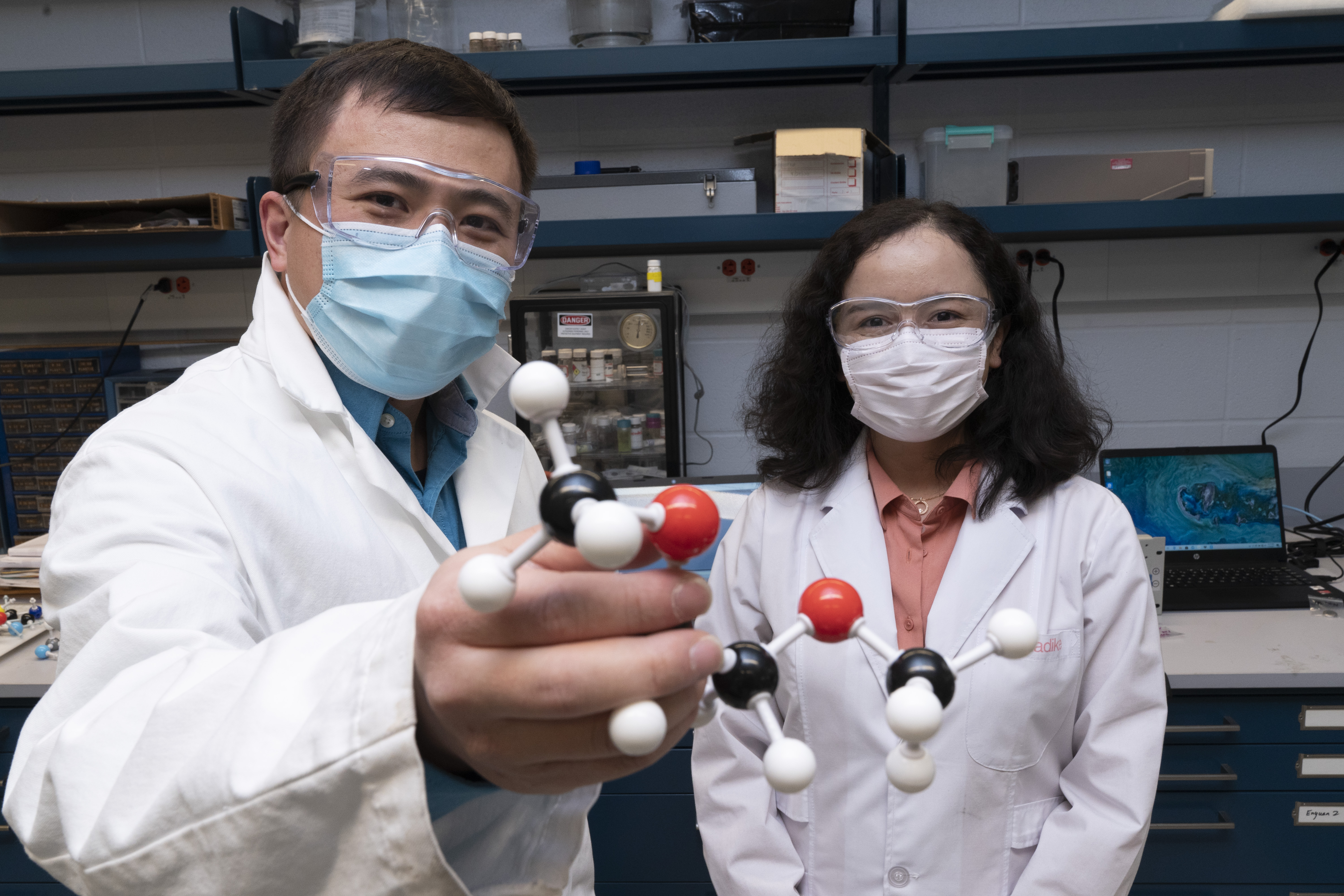
Chemists Settle Battery Debate, Propel Research Forward
UPTON, NY—A team of researchers led by chemists at the U.S. Department of Energy’s (DOE) Brookhaven National Laboratory has identified new details of the reaction mechanism that takes place in batteries with lithium metal anodes. The findings, published today in Nature Nanotechnology, are a major step towards developing smaller, lighter, and less expensive batteries for electric vehicles.
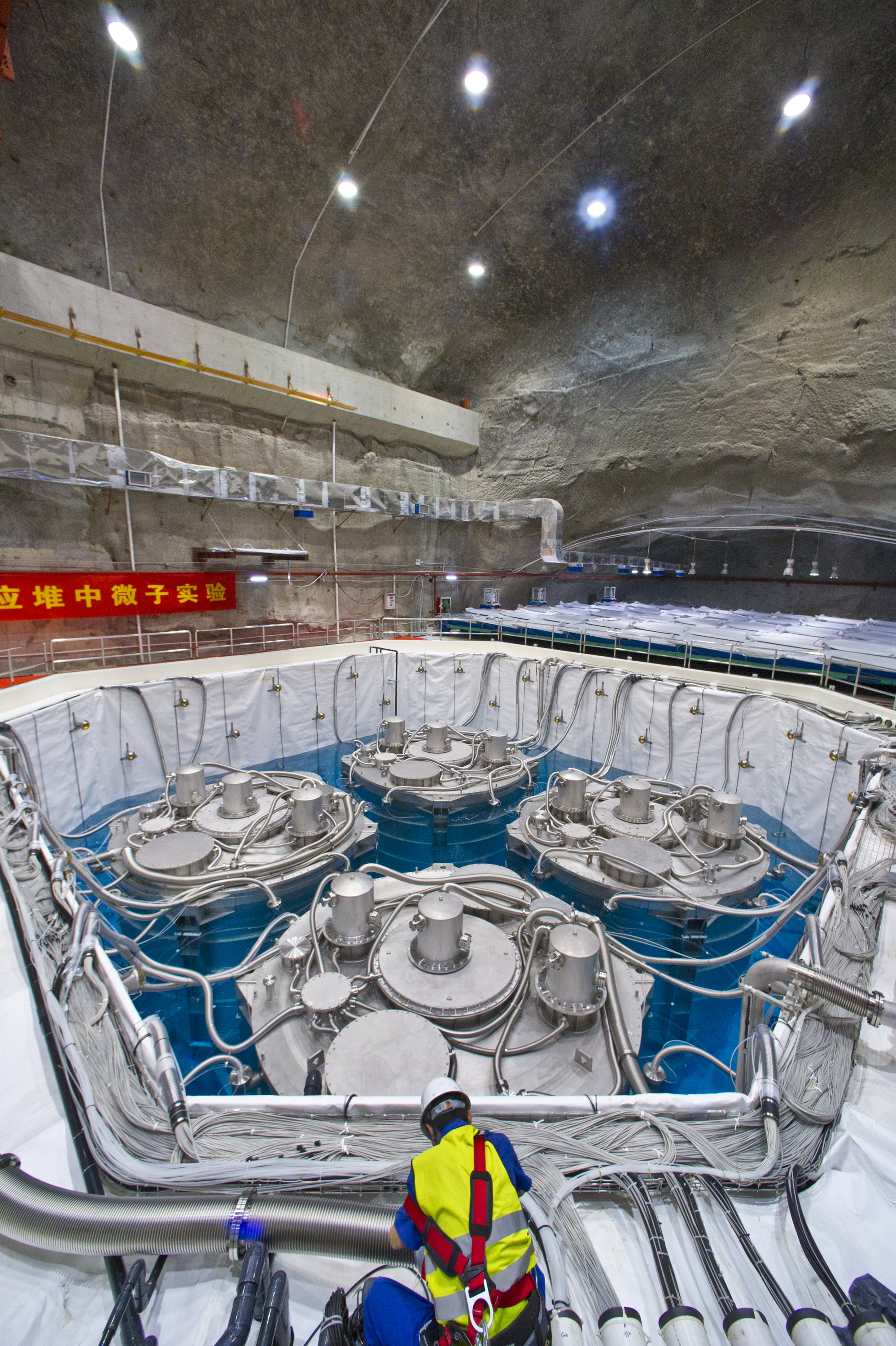
Scientists Say Farewell to Daya Bay Site, Proceed with Final Data Analysis
The Daya Bay Reactor Neutrino Experiment collaboration – which made a precise measurement of an important neutrino property eight years ago, setting the stage for a new round of experiments and discoveries about these hard-to-study particles – has finished taking data. Though the experiment is formally shutting down, the collaboration will continue to analyze its complete dataset to improve upon the precision of findings based on earlier measurements.
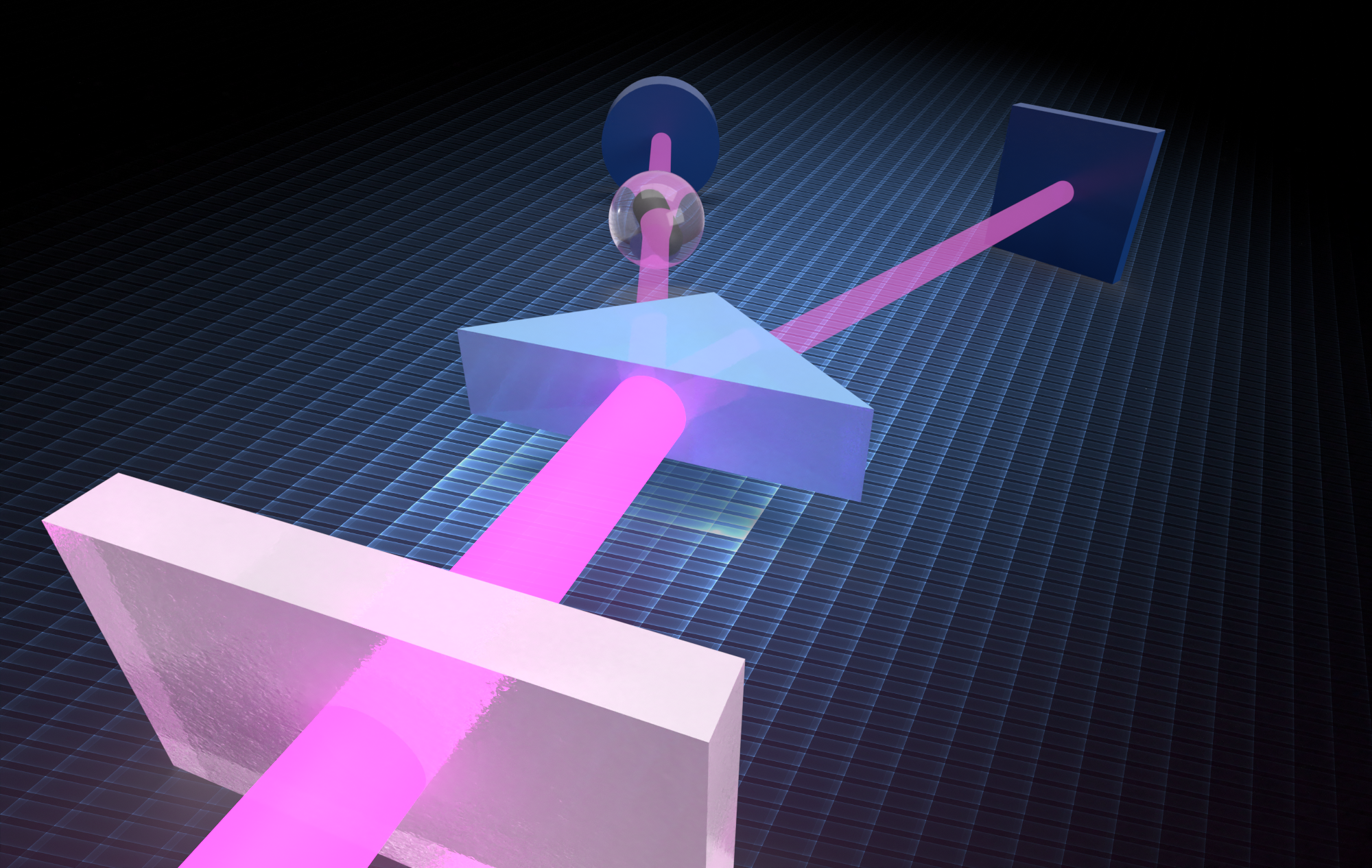
Quantum X-ray Microscope Underway at Brookhaven Lab
UPTON, NY—Scientists at the U.S. Department of Energy’s (DOE) Brookhaven National Laboratory have begun building a quantum-enhanced x-ray microscope at the National Synchrotron Light Source II (NSLS-II). This groundbreaking microscope, supported by the Biological and Environmental Research progam at DOE’s Office of Science, will enable researchers to image biomolecules like never before.
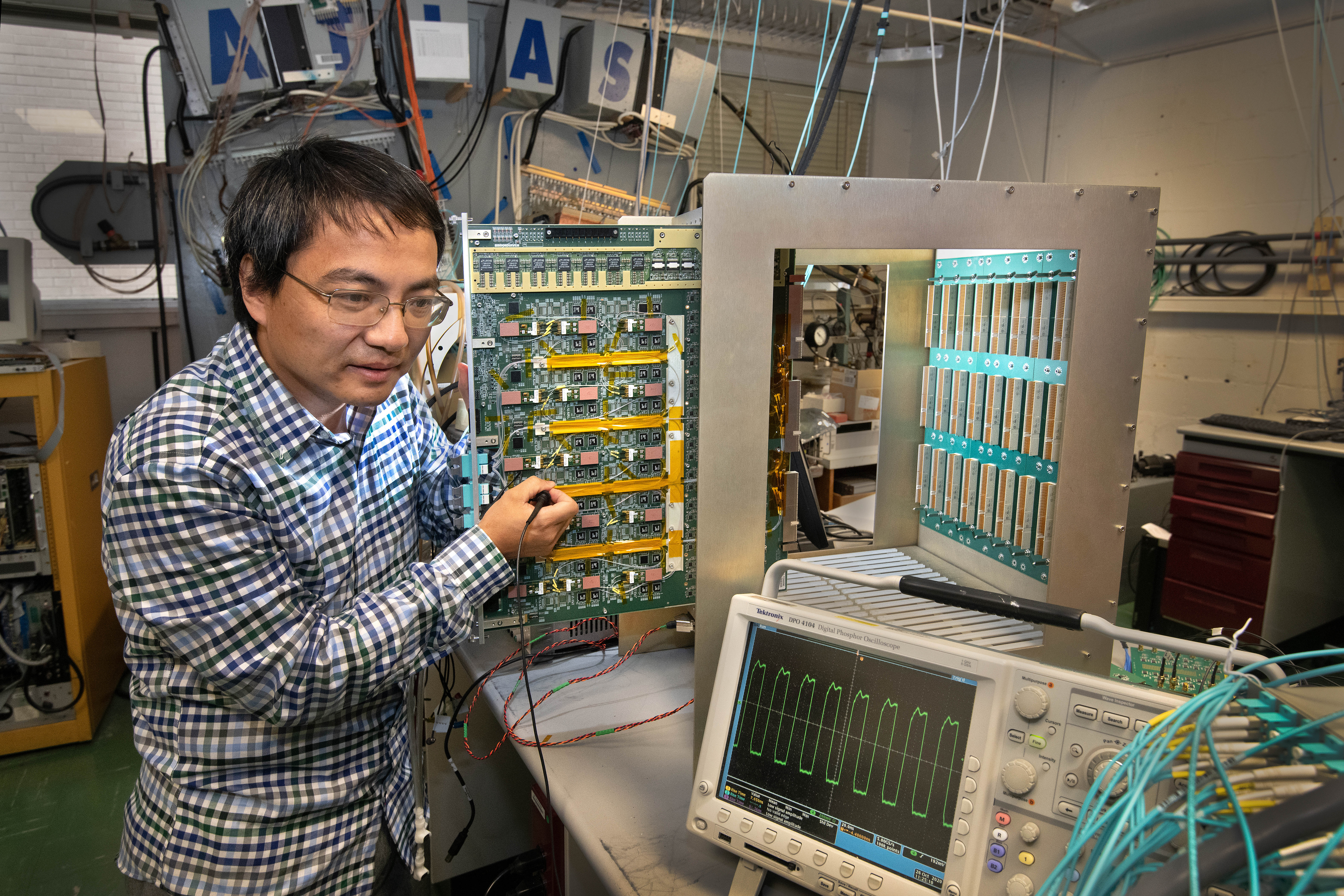
ATLAS Experiment Upgrade Wins DOE Project Management Award
In recognition of project management excellence, the U.S. Department of Energy (DOE) has awarded the U.S. ATLAS Phase I Detector Upgrade team, led by DOE’s Brookhaven National Laboratory and Stony Brook University, with the Secretary’s Achievement Award. The upgrade is one of only three projects to be honored with a DOE project management award this year.
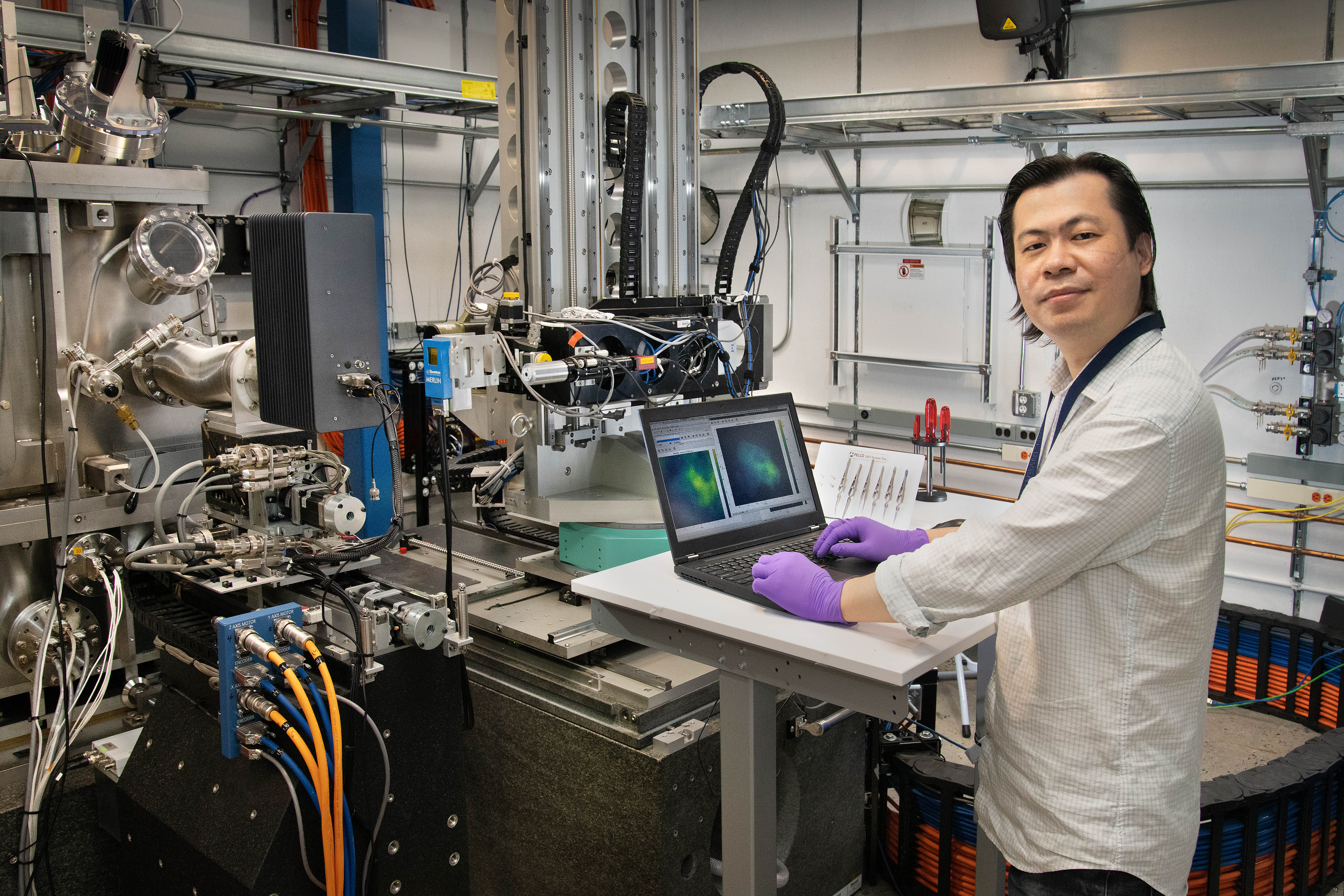
IBM Investigates Microelectronics at NSLS-II
From smartphones to laptops, the demand for smaller and faster electronics is ever increasing. And as more everyday activities move to virtual formats, making consumer electronics more powerful and widely available is more important than ever. IBM is one company at the forefront of this movement, researching ways to shrink and redesign their microelectronics—the transistors and other semiconductor devices that make up the small but mighty chips at the heart of all consumer electronics.
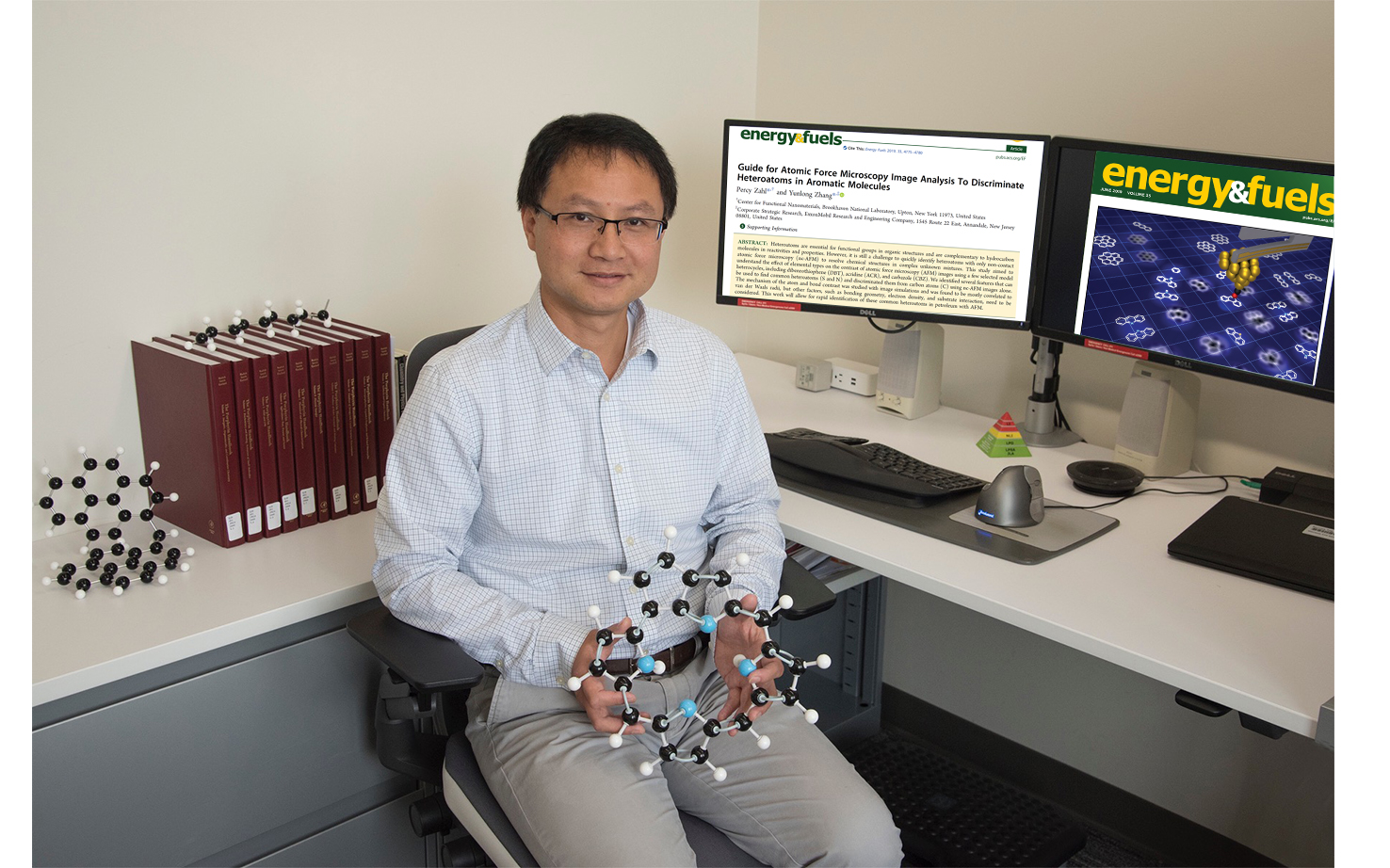
Decoding the Structure of Petroleum with Yunlong Zhang
ExxonMobil chemist and user of Brookhaven Lab’s Center for Functional Nanomaterials (CFN) Yunlong Zhang is characterizing molecules in petroleum with high-resolution atomic force microscopy.